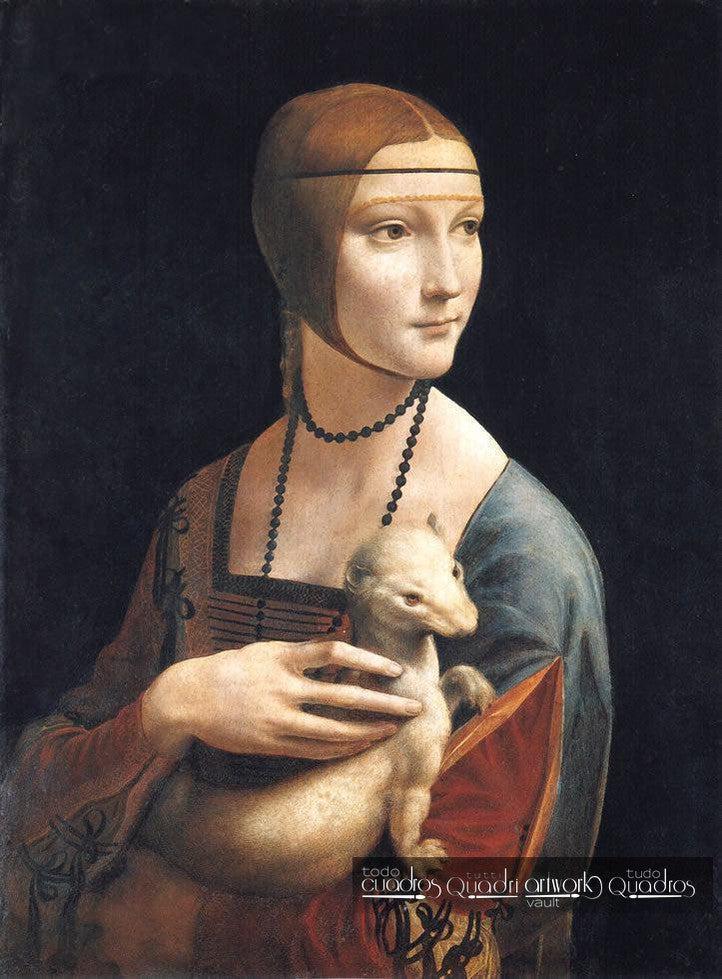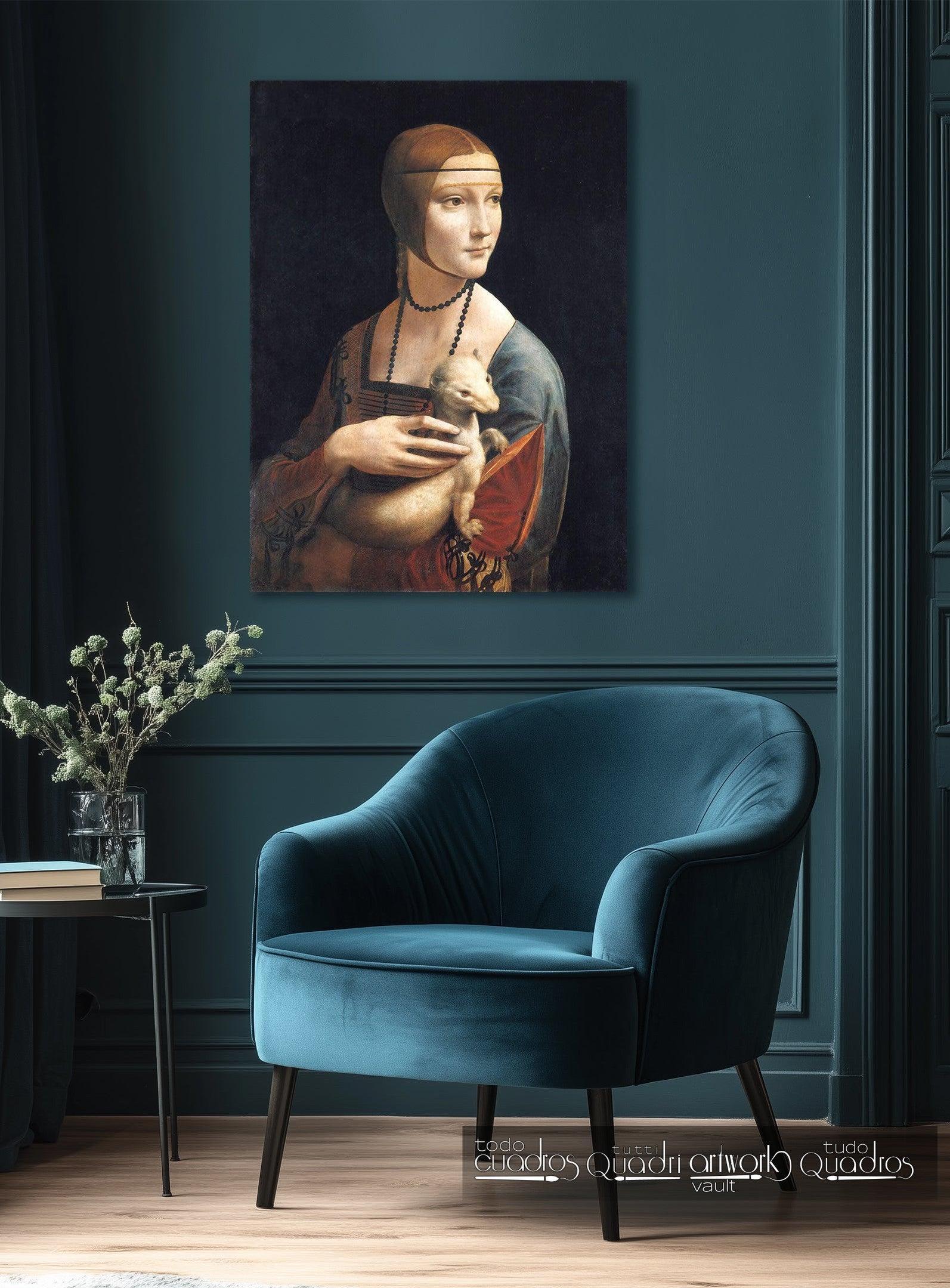

Lady with an Ermine, Leonardo da Vinci
- Oil on linen canvas
- 100% hand-painted
- Painting reproduction
- Available for online purchase
- See quality
- Shipping
- Money-Back Guarantee
- Reviews
| Author: | Leonardo da Vinci |
|---|---|
| Original Title: | Dama con l'ermellino |
| Type: | Painting |
| Style: | Renaissance |
| Medium | Oil |
| Support: | Wood Panel |
| Year: | 1488-90 |
| Genre: | Retrato |
| Located: | Museo Czartoryski, Cracovia |
Historical significance
The work is considered one of the most important portraits of the Renaissance in Milan. It was painted under the patronage of Ludovico Sforza, known as “il Moro”, and stands as an early example of dynamic portraiture, with the sitter’s body and head turned in opposite directions. The ermine functions both as a moral symbol of purity and as a personal emblem of the duke, associated with the Order of the Ermine. After belonging to the Czartoryski family, the work was seized by the Nazis during the Second World War and recovered in 1946, becoming an emblem of Polish cultural heritage.
Technical aspects
Leonardo employed superimposed layers of oil applied with great subtlety, creating smooth transitions between light and shadow on the face and hands. The use of sfumato gives volume and naturalism to the skin, while the folds of the dress are rendered with more linear definition. The ermine is depicted with close observation of nature: fur, claws, and gaze are realistically described. The diagonal structure of the composition enhances the sense of movement and breaks with the frontal conventions of 15th-century court portraiture.
Lady with an Ermine (c. 1489–1490) is an oil portrait on walnut panel by Leonardo da Vinci, preserved in the Czartoryski Museum, Kraków. It depicts Cecilia Gallerani, a young woman of the Milanese court, turned in three-quarter view. She wears a braided headdress pulling the hair back, a dress with wide sleeves trimmed in red, and a fine black necklace around her neck. In her arms she holds a white ermine, shown restless, its body tense and head raised. The dark background removes any spatial reference and concentrates all attention on the figure.
Choose options




